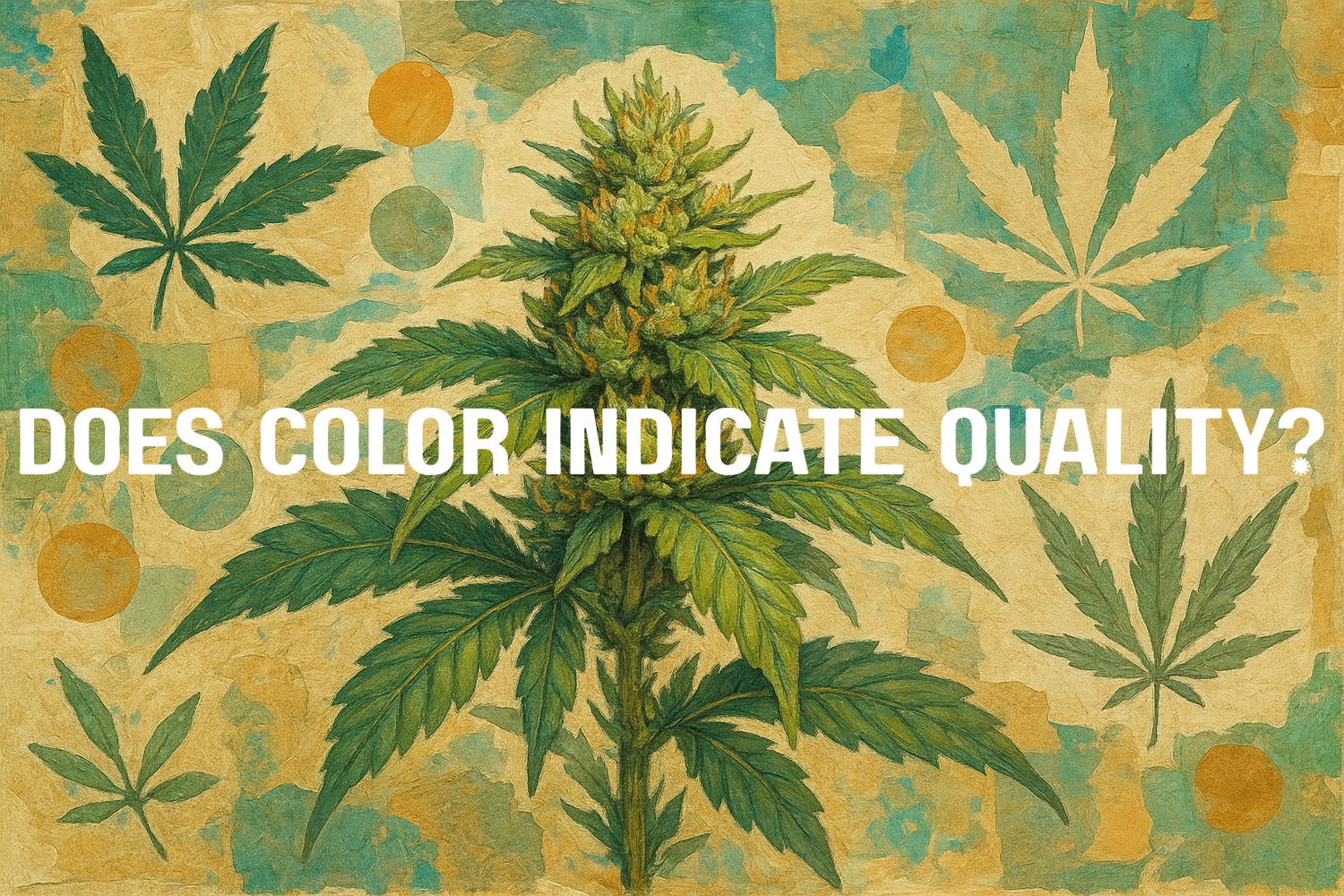Bright purples, deep greens, fiery orange hairs—cannabis flowers come in a dazzling range of colors. It’s easy to assume that the most vibrant buds are also the most potent or best-tasting. But is that actually true? At THCA Trim, we dig beyond surface beauty to uncover the real science behind cannabis appearance—and how to truly judge quality.
1. Where Cannabis Flower Color Comes From
Cannabis color is influenced by plant biology and environmental conditions:
Chlorophyll — The green pigment essential for photosynthesis, dominant during most of the plant’s life cycle.
Anthocyanins — Water-soluble pigments that produce purple, blue, and red hues. Expression can be triggered by genetics, cooler night temperatures, and certain nutrient profiles.
Carotenoids — Pigments responsible for yellows and oranges, often revealed as chlorophyll degrades late in flowering or during curing.
Environmental Triggers — pH, nutrient levels, and temperature shifts can all alter pigment expression without affecting potency.
Key takeaway: Color changes are often aesthetic outcomes of genetics and growing conditions—not direct potency indicators.
2. Why Color Doesn’t Equal Quality
A deep purple bud doesn’t automatically mean it’s stronger or richer in flavor than a light green one. Color alone tells you almost nothing about:
Cannabinoid content (THCA, CBD, CBG levels)
Terpene profile (aroma and flavor compounds)
Cleanliness (absence of pesticides, mold, or residual solvents)
Potency and flavor come from the plant’s chemistry, not its pigment palette.
3. Trichomes: The Real Quality Signal
Instead of judging by color, look closely at trichomes—the tiny, resin-producing glands coating the buds:
Density: More trichomes generally mean higher cannabinoid and terpene concentration.
Appearance: Milky/cloudy trichomes indicate peak potency; amber trichomes suggest cannabinoid breakdown into CBN (milder effects).
Uniformity: Even coverage often means the plant matured properly before harvest.
Pro tip: Use a jeweler’s loupe or macro lens to examine trichomes rather than relying on naked-eye color cues.
4. A Complete Quality Checklist
To accurately judge cannabis flower, consider multiple sensory and analytical factors:
Visual:
- Trichome density and clarity
- Healthy, vibrant pistils (hairs)
- No visible mold or discoloration
Aroma:
- Strong, fresh terpene profile—pungent, fruity, gassy, or herbal depending on strain
- Absence of musty, ammonia-like, or “off” smells
Touch:
- Sticky and slightly spongy, not overly dry or damp
- Bud structure consistent with strain genetics (dense for indica, airier for sativa)
Lab Testing:
- Certificate of Analysis (COA) confirming cannabinoid content, terpene profile, and contaminant screening
- Verified by an accredited third-party lab
5. Why Color Still Matters—But Only Partially
While color doesn’t directly reflect potency, it can hint at freshness, harvest timing, and genetic traits. For example:
- Deep purples often develop in strains genetically predisposed to high anthocyanin production under cooler conditions.
- Bright oranges and golds can suggest late flowering maturity as pistils oxidize naturally.
- Faded browns or grays often signal age, oxidation, or poor storage.
Conclusion
Cannabis color is captivating, but true quality lies beneath the surface. Trichome maturity, terpene aroma, and verified lab results tell the real story. At THCA Trim, we educate and source with these standards in mind—so your flower isn’t just beautiful, it’s potent, flavorful, and clean.
If you want, I can also make a THCA Trim “Flower Quality Visual Guide” infographic from this blog so customers can instantly see the difference between color aesthetics and real potency signals. That would make this piece far more shareable and SEO-friendly.

